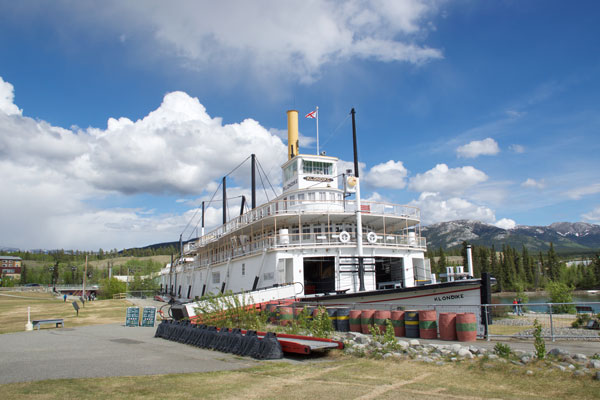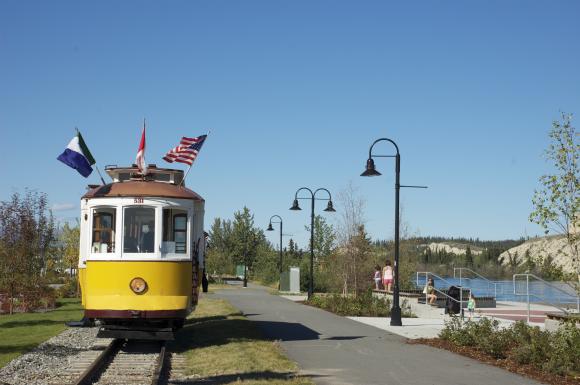Located at Historic Milepost 918 on the Alaska Highway, the downtown business section of Whitehorse lies on the west bank of the Yukon River. Whitehorse has been the capital of Yukon since 1953, and is the hub of Yukon’s 2,700 mile/4,300 km road system.

The Klondike gold rush brought stampeders and the railroad from Skagway to Whitehorse. The community grew as a transportation centre and transshipment point for freight from the Skagway–Whitehorse railroad and the stern-wheelers plying the Yukon River to Dawson City. A second boom period for Whitehorse occurred during construction of the Alaska Highway, when they city became headquarters for the western sector and one of the largest camps on the pioneer road. The Alaska Highway opened to civilian travel in 1948, encouraging new development, especially in mineral exploration and mining, as well as tourism. Because of its accessibility, Whitehorse became capital of Yukon (replacing Dawson City in that role) on March 31, 1953.

Perhaps Whitehorse’s best known attraction is the SS Klondike National Historic Site. It’s hard to miss this grand old stern-wheeler. She sits beside the Yukon River near the Robert Campbell bridge in downtown Whitehorse. The Klondike carried mail, general supplies, passengers and silver lead ore along the 460-mile route between Whitehorse and Dawson City until 1955, when she was retired. Built in 1929, the vessel was the largest on the Yukon. The interpretive centre adjacent the stern-wheeler is open from mid-May to mid-September, and tours of the vessel are available.
Another hard-to-miss landmark in Whitehorse is located in front of the Whitehorse International Airport. It’s the world’s largest weathervane—a Douglas DC–3. This vintage plane was mounted on a rotating pedestal in 1981.

Another major attraction in Whitehorse is the Yukon Beringia Interpretive Centre, which traces the Ice Age in Yukon, which—unlike the rest of Canada—was ice-free. Displays at the Centre present the science and myth of the Ice Age subcontinent of Beringia, inhabited by great woolly mammoths, giant short- faced bears and lions. Ice Age specimens include a well-preserved Ice Age Yukon horse hide and a reproduction of a scimitar cat, as well as other Ice Age mammals. Open daily, mid-May to late September.
Whitehorse also boasts the Yukon Transportation Museum, located adjacent the Beringia Interpretive Centre on the Alaska Highway, at the turnoff to Whitehorse International Airport. Displays range from the full-size replica of the Queen of the Yukon Ryan monoplane and the enormous LeTourneau Logictical Cargo Carrier land train, to tiny dioramas of significant historical events. Look for the DC-3 wind vane on the Alaska Highway in front of the museum.
Downtown Whitehorse also has log “skyscrapers” and the Old Log Church, built in 1900. Historic walking tours of the city’s heritage buildings are available.



Comments are closed.